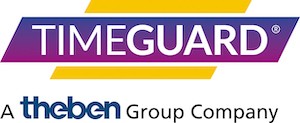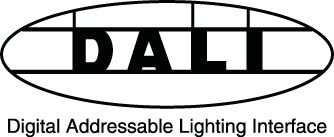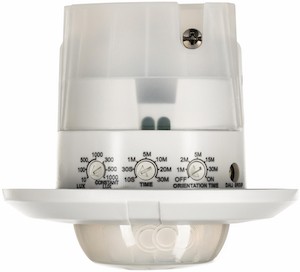View the Timeguard entry on BPindex
You will undoubtedly have come across DALI in the course of your work, but maybe thought it was only for the big contractors on the big jobs? That may have been the case in the past, but DALI controls and devices are finding their way into the mainstream. Now PIR leader Timeguard has released a line-up of DALI-compatible PIR switches. With POR switch, power supply and remote IR control all provided, you have everything you need to get started from a brand you know you can trust. After all, as installers you are used to providing homeowners and businesses with zoned lighting and scene setting – why not take it to the next level?
 And if you’re not ready, or the project doesn’t warrant DALI scene setting, then you can use these new PIRs as standalone detectors and still offer your customers daylight harvesting. That’s just another way of saying that lights will turn on and off in response to changes in the natural light, as the sun goes in and out, as well according to the time of day. You may also have heard this referred to as constant light control that, in the past, has been the preserve of PIR detectors designed – and priced – for the top end of the market.
And if you’re not ready, or the project doesn’t warrant DALI scene setting, then you can use these new PIRs as standalone detectors and still offer your customers daylight harvesting. That’s just another way of saying that lights will turn on and off in response to changes in the natural light, as the sun goes in and out, as well according to the time of day. You may also have heard this referred to as constant light control that, in the past, has been the preserve of PIR detectors designed – and priced – for the top end of the market.
Why bother?
 There are clearly cases and places where ordinary lighting is fine: if the application is simple and doesn’t require daylight harvesting (an important energy saving feature now specified in Building Regulations) , dimming, occupancy control or individual user control, DALI isn’t the answer. But when you do need to design in or add any of these functions, then it is worth thinking about.
There are clearly cases and places where ordinary lighting is fine: if the application is simple and doesn’t require daylight harvesting (an important energy saving feature now specified in Building Regulations) , dimming, occupancy control or individual user control, DALI isn’t the answer. But when you do need to design in or add any of these functions, then it is worth thinking about.
A DALI system just needs a DALI bus for communication between different points on the system such as the controller and a PIR. So, an extra pair of cables between devices and control points of the system is needed : standard 2-core, minimum 1.5mm is sufficient. A DALI loop can contain up to 64 devices – typically LED drivers or PIRs – with multiple loops linked for larger projects.
What is it?
 The Digital Addressable Lighting Interface (DALI) is a standard that enables different devices on a system to talk to each other – they don’t even need to come from the same manufacturer. It’s an international standard, specifically created for lighting, for a two-way communication system that gives easy control and versatility. In a traditional system, control signals are one-way. In a DALI system, signal traffic is two-way, meaning LEDs can be commanded to perform requested actions, such as switch ON/OFF or DIM, but they can also be asked to provide information. The LED driver or switch can provide, for instance, information about intensity and energy consumption, or it can simply verify that it is working.
The Digital Addressable Lighting Interface (DALI) is a standard that enables different devices on a system to talk to each other – they don’t even need to come from the same manufacturer. It’s an international standard, specifically created for lighting, for a two-way communication system that gives easy control and versatility. In a traditional system, control signals are one-way. In a DALI system, signal traffic is two-way, meaning LEDs can be commanded to perform requested actions, such as switch ON/OFF or DIM, but they can also be asked to provide information. The LED driver or switch can provide, for instance, information about intensity and energy consumption, or it can simply verify that it is working.
A DALI network consists of a controller, a power supply (which may be built into the controller) and one or more slave devices (eg ballasts, drivers, dimmers and PIR detectors) that have DALI interfaces. The controller can address devices individually or by multicast. Each device can be assigned to up to/any of 16 groups and can store up to 16 scenes that can be controlled by a single command
DALI sends messages around, and just like computer networks, the ballast with the right address picks the message up and follows the instruction: it might be ‘turn all the lights in the corridor on’, or it could be ‘switch to the theatre lighting scene in the conference room’.
Now that you know the basics, the decision may be a little more straightforward. Do you want to light several multi-function rooms that require different lighting options depending on time of day, usage etc. If so, think about DALI control with the new Timeguard range.


